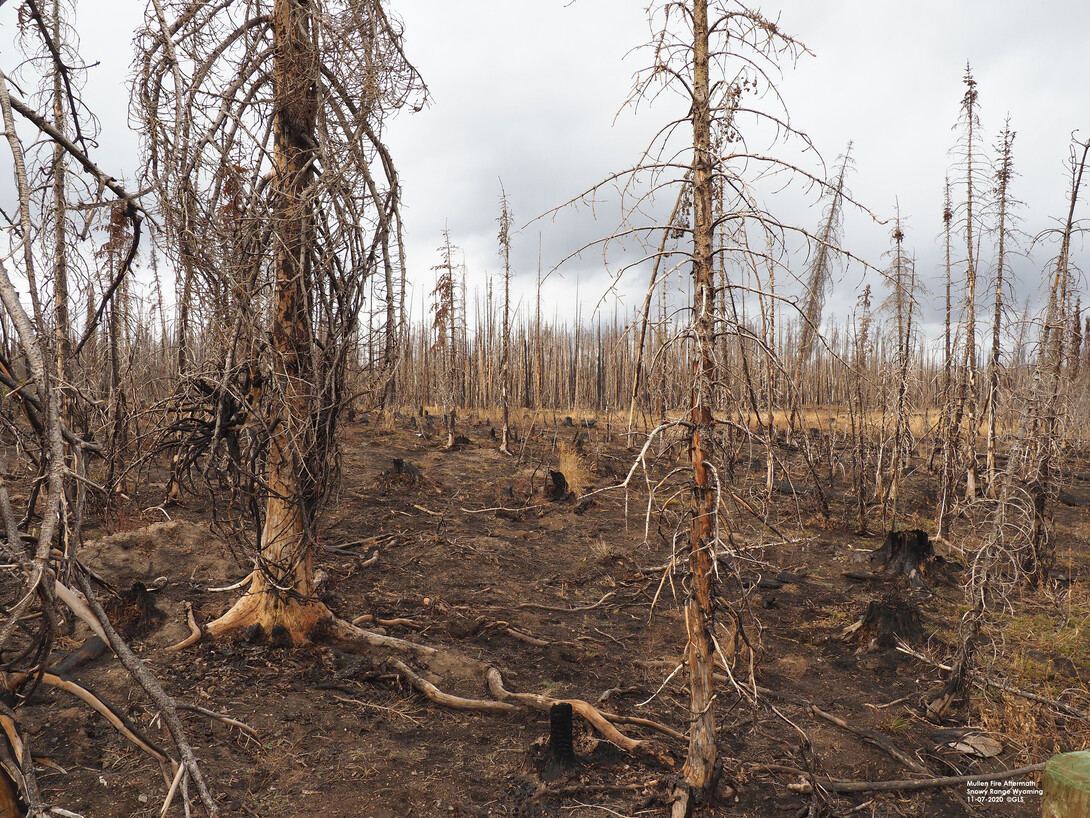
Lincoln, Neb. —The wildfires that took place late this summer and early fall in Colorado and Wyoming are almost completely controlled, but they still might affect agriculture throughout Nebraska next growing season, and for years to come.
Why? Both of these fires as a whole or in part affect the Upper North Platte River watershed. Causes are uknown at this time for the Cameron Peak fire, west of Fort Collins, Colo., and the Mullen fire, west of Laramie, Wyo.
Part of the Cameron Peak fire area takes in a portion of the headwaters of the Laramie River, which is a major tributary to the North Platte River. The remainder of the fire area is part of the South Platte River watershed. This fire started Aug. 13, 2020, and encompasses approximately 208,913 acres or 326 square miles. It was 92 percent contained as of Nov. 9. The fire is located in the Arapaho and Roosevelt National Forests.
The entirety of the Mullen fire affects the headwaters of the North Platte River watershed. This fire started Sept. 17, 2020, and encompasses approximately 176,878 acres or 276 square miles. It was 97 percent contained as of Nov. 9. The fire is located in the Medicine Bow and Routt National Forests.
Most of Nebraska was affected by the smoke from these fires, some days worse than others. In the southern Panhandle the air quality was very poor and visibility was limited to 5 miles or less on some days. Winds as high as 70 miles per hour helped spread the fire in the rugged terrain along with drought conditions and significant timber-beetle kill from several years ago.
The fire crossed over into Colorado on Sept. 26. Burn scars from previous fires helped slow the fire’s progress and on Oct. 24 and 25, up to a foot of snow in the area helped significantly to reduce the fire spread. The fire boundary map would take in approximately 40 percent of the southern portion of the Medicine Bow Range mountains, between Wyoming Highway 230 on the south and Wyoming Highway 130 on the north. All Forest Service roads within the fire area remained closed as of Nov. 9.
Although a large number of acres are indicated, not all of these are acres are affected; the entire area is not burned to a char. The fire was spotty, some areas not affected and others mostly burned up. But there is still a large amount of beetle kill timber across the region and the potential for more wild fires is there.
The Upper North Platte River watershed headwaters is located in north-central Colorado, close to Walden, Colo. The Sierra Madre mountain range is on the west side of the headwaters and the Snowy Range mountain range is on the east side. Snowmelt from both of these mountain ranges together contribute approximately 75 percent of the water flow in the North Platte River, which contributes a significant amount of water for irrigation, recreation, wild life habitat and municipal use across the states of Nebraska and Wyoming.
The fires’ effect on water supplies in the coming years will depend on the amount of snow fall / snow pack in the watershed. There may be slightly higher incidences of sediment runoff in isolated areas and possibly faster snowmelt runoff in the spring due to an increase in the amount of sunlight hitting the slopes and warmer spring temperatures. But all of this is just a wait-and-see, and will depend on what happens next spring.
For more information on these fires, visit this web site: https://inciweb.nwcg.gov/incident/maps/7208/
For information on the North Platte River and the irrigation projects in Nebraska and Wyoming, visit the slideshare presentation on the University of Nebraska Panhandle Research, Extension and Education Center website.
For related issues with crops, livestock, horticulture and the 68 year long-running Backyard Farmer series, please visit these websites: https://cropwatch.unl.edu/, https://beef.unl.edu/beefwatch, https://communityenvironment.unl.edu/, https://mastergardener.unl.edu/, https://byf.unl.edu/.
You raised it, you grew it, now what do you do with it? Try https://food.unl.edu/. There is a wealth of knowledge and information at each of these University of Nebraska Extension web sites.







